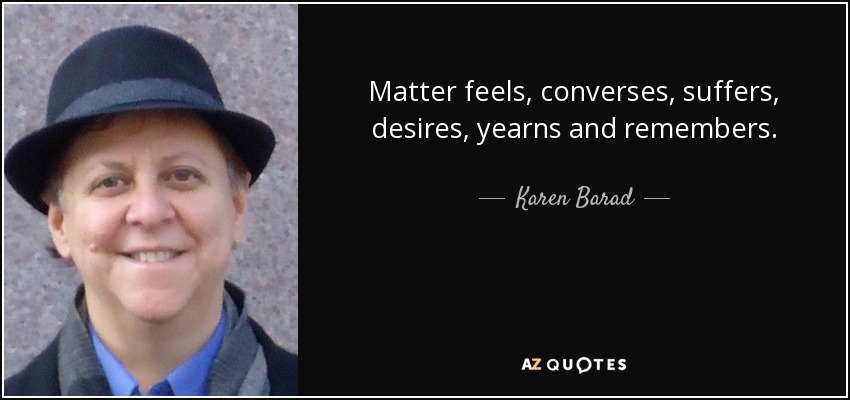Intra-action is a concept introduced by Karen Barad (wiki ![]() ). It describes the mutual constitution of entangled agency, that is the mutual constitution of our ability to act. A
). It describes the mutual constitution of entangled agency, that is the mutual constitution of our ability to act. A
When two entities intra-act, they do so in co-constituitive ways. This means that agency is not a preexisting given. The ability to act emerges from within the relationship not outside of it. And this ability constantly changes and adapts according to processes it is involved in.
YOUTUBE v0SnstJoEec 3'18 video
# Features
- all phenomena are phenomena testify "the ontological inseparability of intra-acting agencies"
- people and things are intermingled, there is intra- not interaction: so the two intra-acting bodies are not completely separated from each other (whereas in inter-action all inter-acting elements maintain a level of independence: Each entity exists before they encounter one another.)
- a phenomenon is "made and unmade THROUGH interaction" with human and non-human actors; between nature, culture and technology
It's unlikely that many of us will inter-act with the Ebola virus, but we will all intra-act with the Ebola phenomenon and therefore we are all responsible for the matter produced in these interactions: the discourses, the materials and the subject positions.
- intra-actions defer and deflect (??) responsibility. In intra-actions responsibility is distributed among the constitutive entities.
- thinking in terms of intra-action means giving up subject-object dichotomies, linear time, cause-and-effect relationships as well as individual agency
- helps us understand simultaneity
# See also
add related concepts
